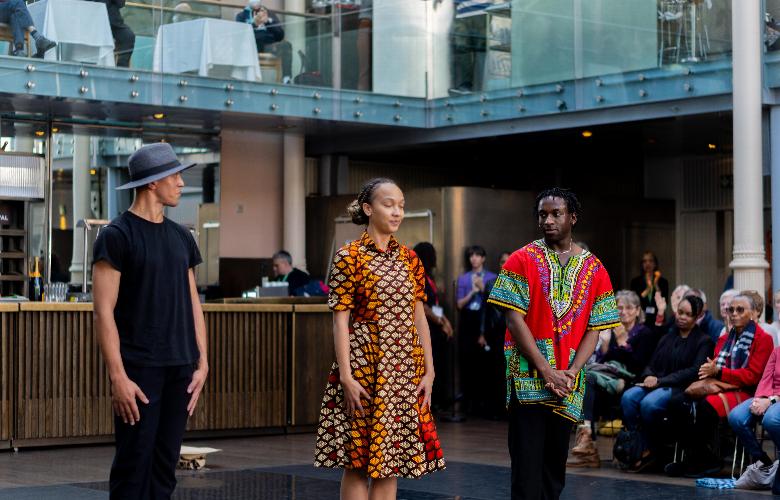Every Friday at 1pm, the Royal Opera House's cafe - the Paul Hamlyn Hall - fills with about 200 hundred keen ballet fans. This is their Live at Lunch performances which are short work-in-progress pieces that will be performed on stage later in the year. On Friday 27th October, it was Island Movements based on the Windrush scandal, the last of a series based on Black British stories.
Island Movements is a central piece for the Black British Ballet project, which promotes diversity in ballet. It is choreographed by Darren Patton, a young man who is - amazingly - the first Black British graduate of the Royal Ballet School. The work is based on the PhD work of its director, Dr Sandie Bourne, who wrote and studied the reasons behind the lack of black British dancers in dance schools and on our stages. After the performance she explained why this project is so important, “If you're not reflected on the stage, why would you want to do ballet? If you do have dancers or teachers that are black it's inspiring. It's really been exciting, to see, to tell the story, and touring around the England to people that have never seen ballet - they've been amazed to see that you can tell the story of the Windrush in a ballet through music and dance. They've been so touched.”
The story begins with one male dancer on stage, dressed in army uniform and carrying a suitcase decorated with an England flag sticker and pictures of cartoons. With a series of elegant arabesques and fluid pirouettes in his grey suit and decorated peaked hat, he represents the thousands of people from the west indies who were air crew for the RAF, fought for the British Army, and served onboard Royal Navy ships in the Second World War. After the war, he returns to Jamaica but is again called upon by Great Britain - they need help to fill post-War labour shortages re-building the economy and so he returns, this time in a fedora. The atmosphere is more relaxed and the music by youth group Kinetika Bloco plays reggae and calypso to reflect this post-war boom of prosperity.
Sadly, not all is well. He is met with ‘No blacks, no Irish, no dogs' signs - a shockingly frequent sight in the windows of bed & breakfasts in England until well into the 1970s. He meets and marries a young woman, but another presence is tugging at his mind to make him think of Jamaica and the people he left behind, which includes a son who then moves to England and is introduced to his stepmother. This whole narrative is told with just a few props - the dancers communicated the story that by now, everyone in Great Britain is quite aware. After fighting in the war for this country and contributing to repairing our then fragile economy, our protagonist is deported in his later years, in a scandal that lasted years and affected thousands of people and their families.
Bringing movement and emotion to these stories is so important and this cast does it well - and all in only half an hour. The story that evolves from young naive bravery to courage then hope and determination is succinct but so valuable.
The audience was the most diverse I have ever seen at a dance event, and I have seen many. It proves that to see your story and the story of your family told on a stage is a powerful thing. The Nutcracker is wonderful in its magical escapism, but to represent difficult parts of our own history in a sensitive and moving way is surely the very essence of culture and ballet has a duty to create work like this - to memorialise history in culture so that it can be remembered beyond news articles and history books. A brilliant project that is already inspiring so many, including the next generation of dancers.
More info: here.
By Caiti Grove.

